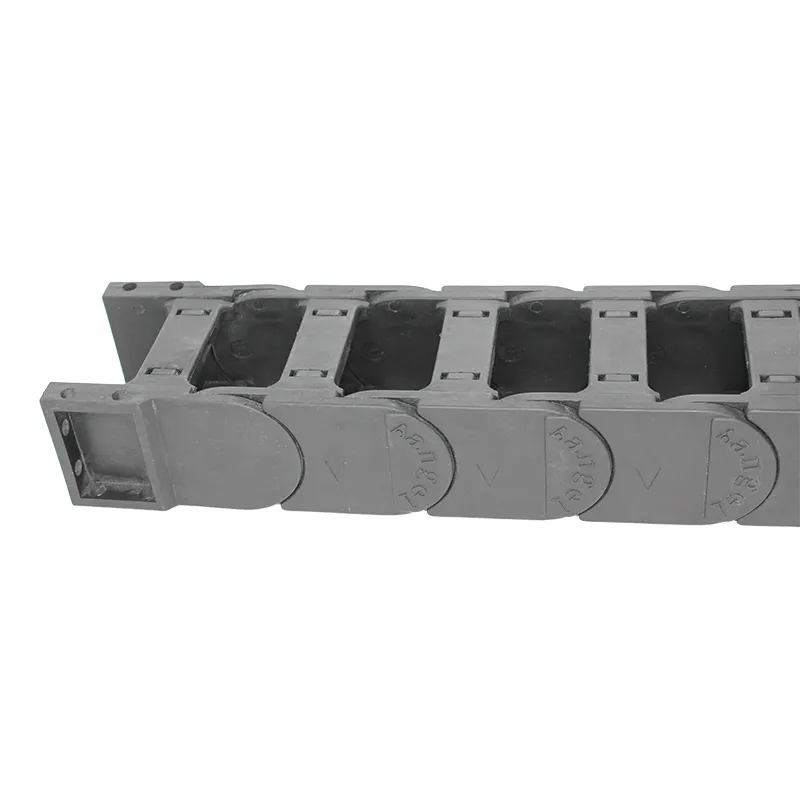drag chain size chart
When it comes to industrial machinery and automation, one of the key components that often goes unnoticed is the drag chain. Drag chains, also known as cable carriers or cable chains, are crucial for protecting and managing cables, hoses, and wires in moving applications. Given the variety of configurations and requirements across different applications, understanding drag chain size charts is essential for selecting the right drag chain for your project.
A drag chain's size is determined by multiple factors, including the cable diameter it needs to accommodate, the overall length of the cable run, the type of installation (horizontal or vertical), and the dynamic motion path (such as bending radius or linear movement). The drag chain size chart serves as a valuable tool, providing clear guidelines on the appropriate dimensions based on these criteria.
The fundamental dimensions of a drag chain include the inner height, inner width, and pitch. The inner height must be sufficient to allow the cables or hoses to fit without pinching, while the inner width should provide enough space to prevent friction between the cables and the chain walls. Pitch refers to the distance between the chain links and is crucial for ensuring smooth operation during movement.
When consulting a drag chain size chart, users can find specific dimensions and load capacities for various drag chain models. These charts usually categorize chains by size and application, allowing for easier comparisons between options. For example, a light-duty application may require a smaller drag chain capable of handling less weight, while heavy-duty applications necessitate larger, more robust chains designed for prolonged use under extreme conditions.
drag chain size chart

The shape of the drag chain is also essential to consider. Some chains are designed in a rectangular or rounded profile, which can influence the flexibility and bending radius. A smaller bending radius allows for tighter turns, making them suitable for compact spaces, while larger bending radii are ideal for longer runs or applications requiring more extensive movement.
Ultimately, selecting the correct drag chain based on the size chart is critical to ensuring both functionality and longevity. An improperly sized drag chain can lead to increased wear and tear, cable damage, or even system failures, leading to costly downtime. Additionally, many manufacturers offer customizable solutions, allowing users to tailor the size and specifications according to their unique requirements.
In conclusion, understanding and utilizing a drag chain size chart is integral to maintaining efficiency and durability in applications involving movement of cables and hoses. By paying close attention to the dimensions and specifications outlined in these charts, operators can make informed decisions that optimize their systems and contribute to overall operational success.








